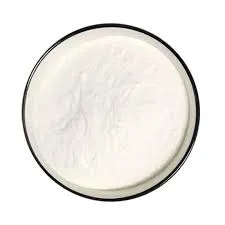
ਅਗਃ . 09, 2024 05:25 Back to list
Understanding the Thickening Mechanism of Hydroxyethyl Cellulose in Various Applications and Formulations
The Thickening Mechanism of Hydroxyethyl Cellulose
Hydroxyethyl cellulose (HEC) is a non-ionic, water-soluble polymer derived from cellulose, primarily used as a thickening agent in various industries, including cosmetics, pharmaceuticals, food, and construction. Given its widespread application, understanding the thickening mechanism of HEC is crucial for optimizing its use in different formulations.
Structure and Properties of Hydroxyethyl Cellulose
HEC is synthesized by the reaction of ethylene oxide with cellulose, leading to the formation of hydroxyethyl groups attached to the cellulose backbone. This modification enhances the solubility of the polymer in water, making it an effective thickening agent. HEC demonstrates excellent thickening properties, alongside other desirable characteristics such as stability, biodegradability, and biocompatibility. Furthermore, its viscosity can be adjusted based on molecular weight and concentration, allowing for versatility in formulations.
Mechanism of Thickening
The thickening mechanism of HEC primarily involves the formation of a three-dimensional network structure in aqueous solutions. When HEC is dissolved in water, the polymer chains become hydrated, leading to swelling. This hydration process is essential as it allows the polymer to occupy a larger volume, effectively increasing the viscosity of the solution.
1. Hydrogen Bonding One of the key interactions in the thickening process of HEC is hydrogen bonding. The hydroxyethyl groups on the HEC chains can form hydrogen bonds with water molecules. This interaction not only contributes to the solubility of HEC but also helps in stabilizing the structure of the thickened solution. The extensive hydrogen bonding network formed in the solution increases resistance to flow, thereby enhancing viscosity.
hydroxyethyl cellulose thickening mechanism

2. Entanglement of Polymer Chains As the HEC concentration increases in a solution, the polymer chains begin to entangle with one another. This entanglement restricts the movement of individual chains, which further contributes to the thickening effect. The more entangled the polymer chains, the greater the resistance to flow and the higher the viscosity of the solution.
3. Hydrodynamic Interactions The hydrodynamic volume of the HEC molecules also plays a significant role in the thickening mechanism. As the polymer chains are elongated in solution, they create a drag effect in the liquid, which results in increased viscosity. This phenomenon is particularly evident in shear-thinning systems, where the viscosity decreases with increased shear rate, allowing for easier application of products that contain HEC.
4. Concentration Effects The viscosity of HEC solutions is highly dependent on its concentration. At low concentrations, the thickening effect is minimal; however, as the concentration increases, the interaction and entanglement of the polymer chains become more pronounced, leading to significantly higher viscosity levels.
5. Temperature Influence The properties of HEC solutions are also influenced by temperature. Higher temperatures can disrupt hydrogen bonding and lead to decreased viscosity, while lower temperatures may enhance the thickening effect. Understanding this temperature dependency is essential in application-specific formulations.
Applications
The unique thickening mechanism of HEC makes it an invaluable component across various industries. In cosmetics, HEC is used to improve the texture, stability, and spreadability of creams and lotions. In the pharmaceutical field, it serves as a suspension stabilizer and a controlled-release agent in drug formulations. Its application in food products helps achieve the desired texture and mouthfeel, while in construction, HEC is utilized in cement and plaster formulations to improve workability.
In conclusion, the thickening mechanism of hydroxyethyl cellulose is a complex interplay of hydrodynamic interactions, hydrogen bonding, entanglement of polymer chains, and the effects of concentration and temperature. By understanding these mechanisms, manufacturers can significantly enhance the performance of HEC in their products, leading to improved quality and efficacy.
-
Versatile Hpmc Uses in Different Industries
NewsJun.19,2025
-
Redispersible Powder's Role in Enhancing Durability of Construction Products
NewsJun.19,2025
-
Hydroxyethyl Cellulose Applications Driving Green Industrial Processes
NewsJun.19,2025
-
Exploring Different Redispersible Polymer Powder
NewsJun.19,2025
-
Choosing the Right Mortar Bonding Agent
NewsJun.19,2025
-
Applications and Significance of China Hpmc in Modern Industries
NewsJun.19,2025







